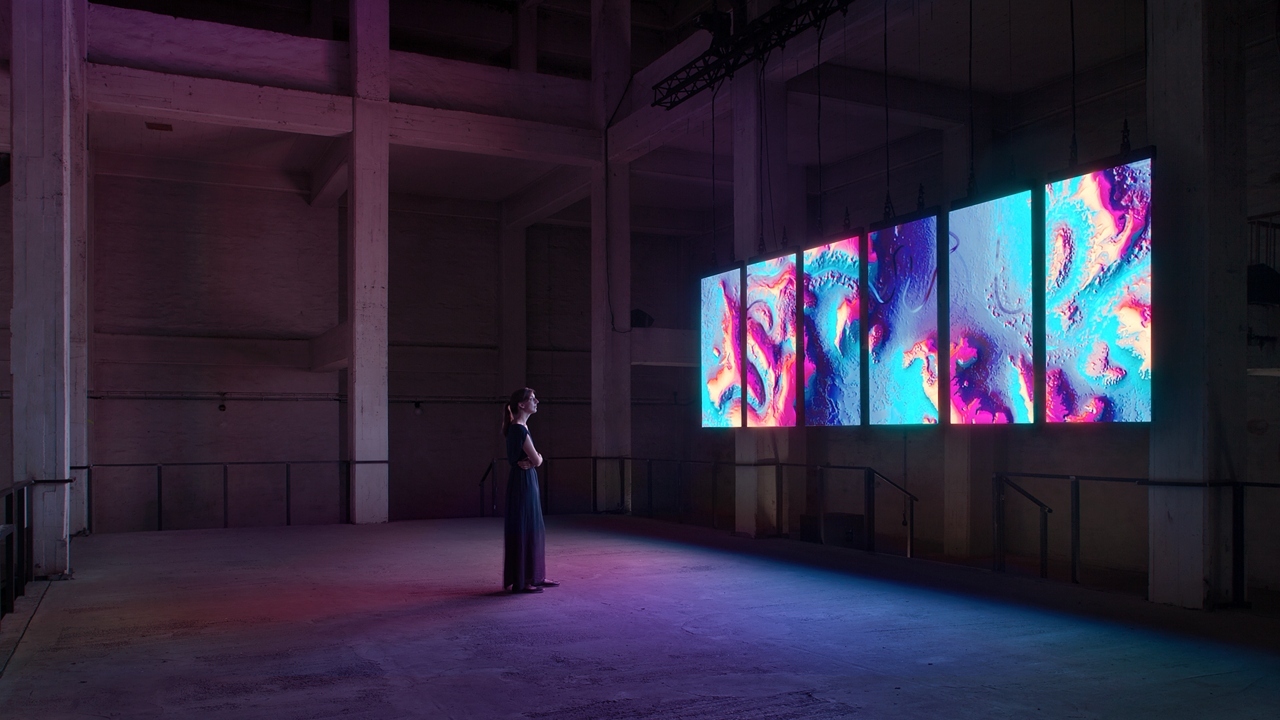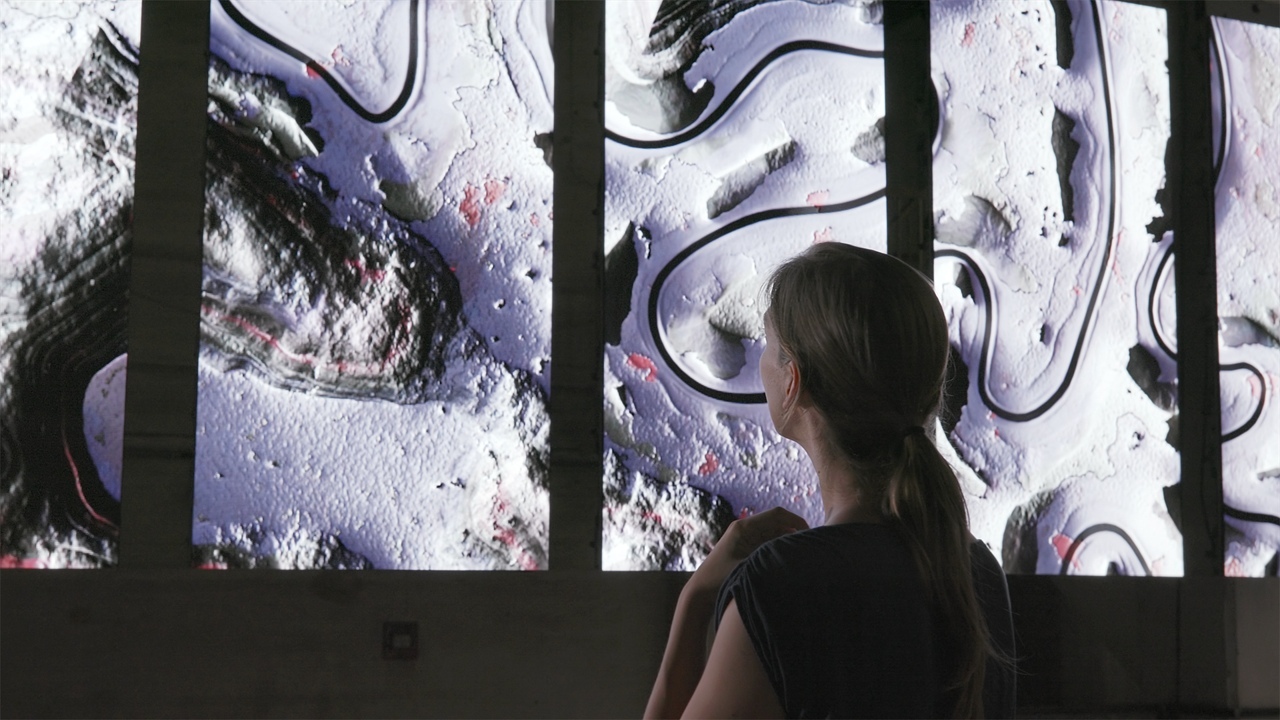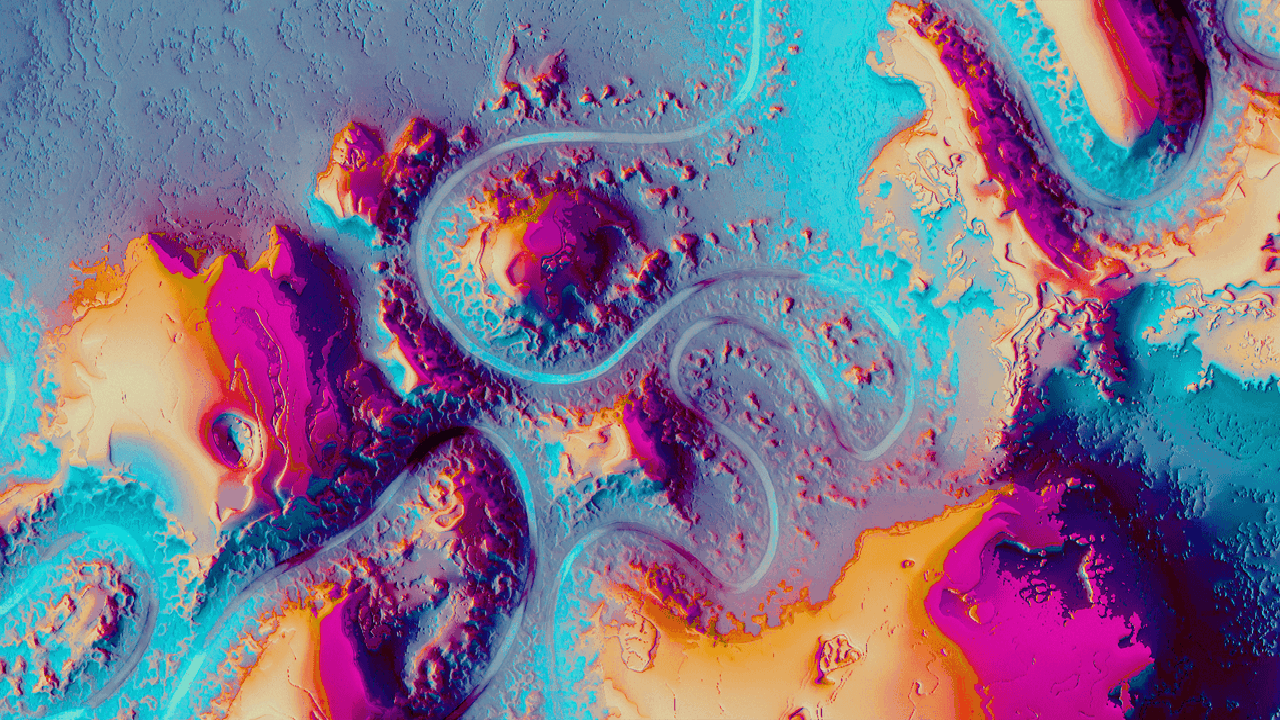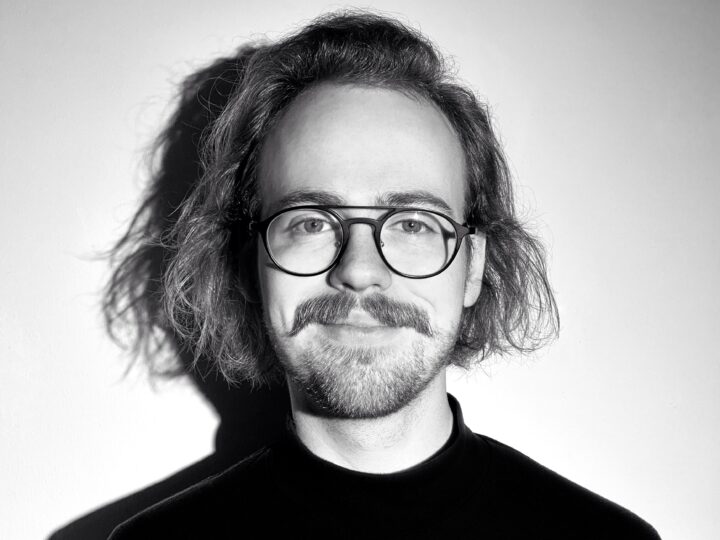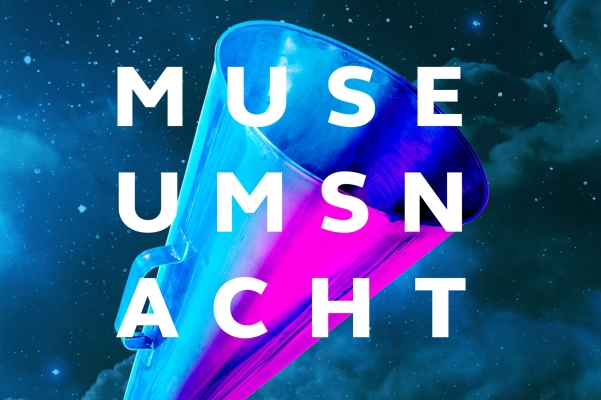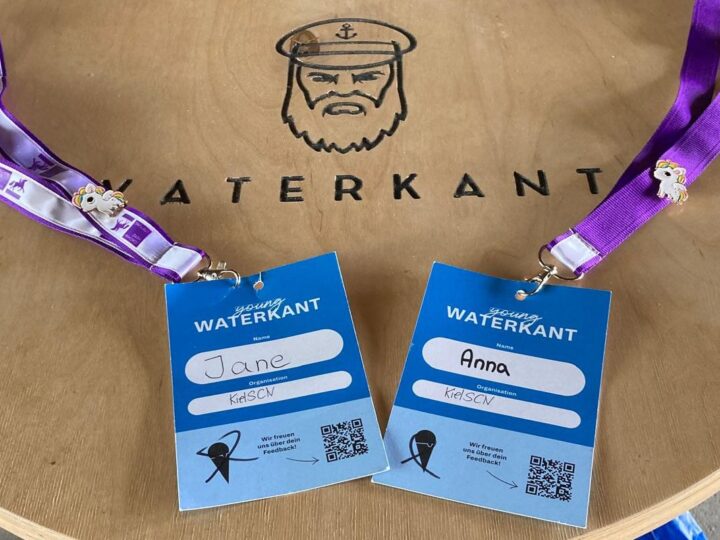VoM #3 – Meandering River
Art Meets Science: Meandering River by Design Studio onformative
Science and art have always entered into a mutual, inspiring symbiosis. In particular in the natural sciences and in medicine, there have been common endeavors in the visual interpretation of man and nature for centuries. And with modern imaging techniques as well as simulations, both disciplines are increasingly using similar tools and computer-generated algorithms. As a result, they are making a visual description and interpretation of our world possible. The artistic, audiovisual installation Meandering River by the design studio onformative from Berlin is an excellent example of this.
Everything Flows
Based on the observation of the landscape development, the studio created an audiovisual installation. This simulates the changes of a river course through algorithmically generated real-time images producing a very special artistic aesthetic. Like a time-lapse aerial shot, the installation makes the rhythmic changes of the river landscapes visible. In this way, they are intended to create “a unique awareness of time”, as onformative itself describes it.
Artistic Research
Meandering River is based on artistic research, an interdisciplinary field between art and science that focuses on the common ground between the two. It also includes strategies that reveal essential parameters for successful visualization, also from the perspective of science communication: The installation reveals processes that are not normally perceptible from the chosen perspective and time lapse. It is a stylized interpretation of nature that focuses on the phenomenon of change. At the same time, it highlights its rhythms in an aesthetic and fascinating way.
The digital presentation on a series of displays also has a high attractiveness and a novel quality in its formal presentation. It is intended to generate fascination among the viewers. The abstracted colors as well as the shapes are impressive and stick in the eye of the observer. By standing out from conventional geographic or satellite images, the artistic interpretation supports the uniqueness of the representation. This gives it an iconic, memorable character. Added to this is the acoustic as a further sensory level. It reinforces the emotional effect and the performative character of the rhythmic visualization.
The work of onformative does not aim at the scientifically accurate representation of a real landscape. Rather, it analyzes and interprets the underlying process in the scientific data and generates its own creation from it. This principle could also be promising in science communication. It attracts attention to a complex topic without overloading the viewer with detailed information.
Can Artistic Strategies also be Applied in Science Communication?
At KielSCN, one of our goals is to look at ways in which such an artistic strategy can also be applied to science communication. Interesting research questions are:
- To what extent can the aesthetic effect of a stylized, abstracted representation, of losing oneself and immersing oneself in a large-scale installation, of the science experience, be transferred to other scientific content?
- To what extent does such a presentation generate attention and invite people to pause for a moment? And does it also create a lasting awareness of the scientific facts?
- How is it possible to appeal to target groups that otherwise have little to do with science by means of an emotional and aesthetic presentation? And what and how do such “Visual Experiences” as Meandering River need to be enhanced in such a way that interested people can engage more deeply and critically with the content?
Achieving aesthetics and emotions through the use of design principles
We want to understand how to achieve aesthetic and emotional effects through the use of design principles. In our eyes, this is where enormous potential for science communication lies. Therefore, it is significant for us not only to investigate classical science representations. We also look for inspiration and stimulation at the boundaries between art, design and science. Our aim is to figure out how we can participate in and build on the centuries-old knowledge of the arts and design in terms of representation and aesthetics for future science communication.
Learn more about Meandering River
Detailed background information on the award-winning audiovisual installation Meandering River can be found on onformative’s website.
About the Visualization of the Month
In our series “Visualization of the Month”, we feature an outstanding visualization on the second Wednesday of each month. One of the criteria for the selection is the extent to which it is aesthetically and emotionally appealing from a design perspective. In addition, we look at the information content. This also includes how the users of the visualization are supported in better comprehending complex contexts. The selection is made within the KielSCN team and involves expertise from the fields of information design, educational science and emotion research, as well as science communication research.
